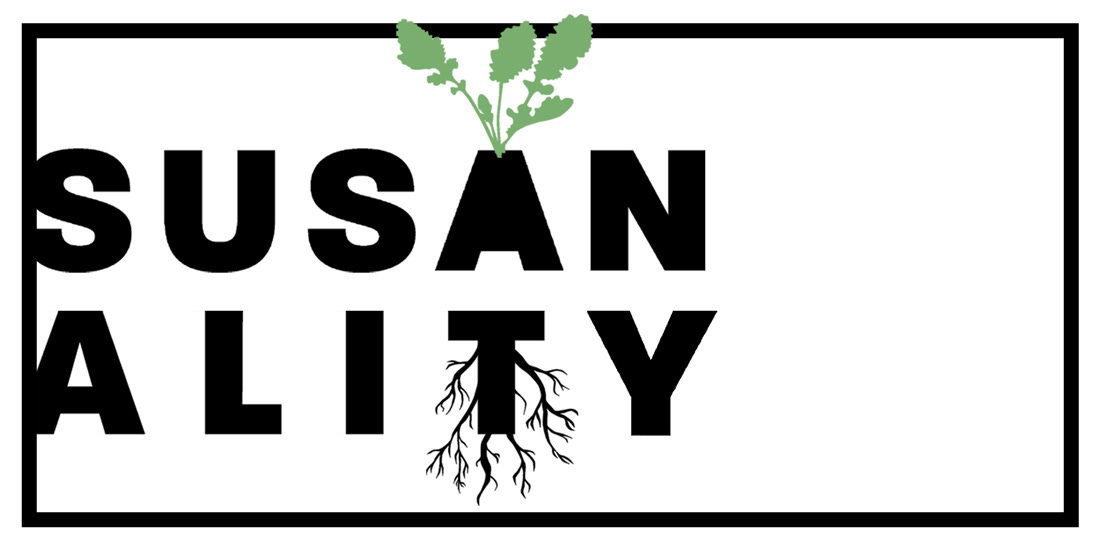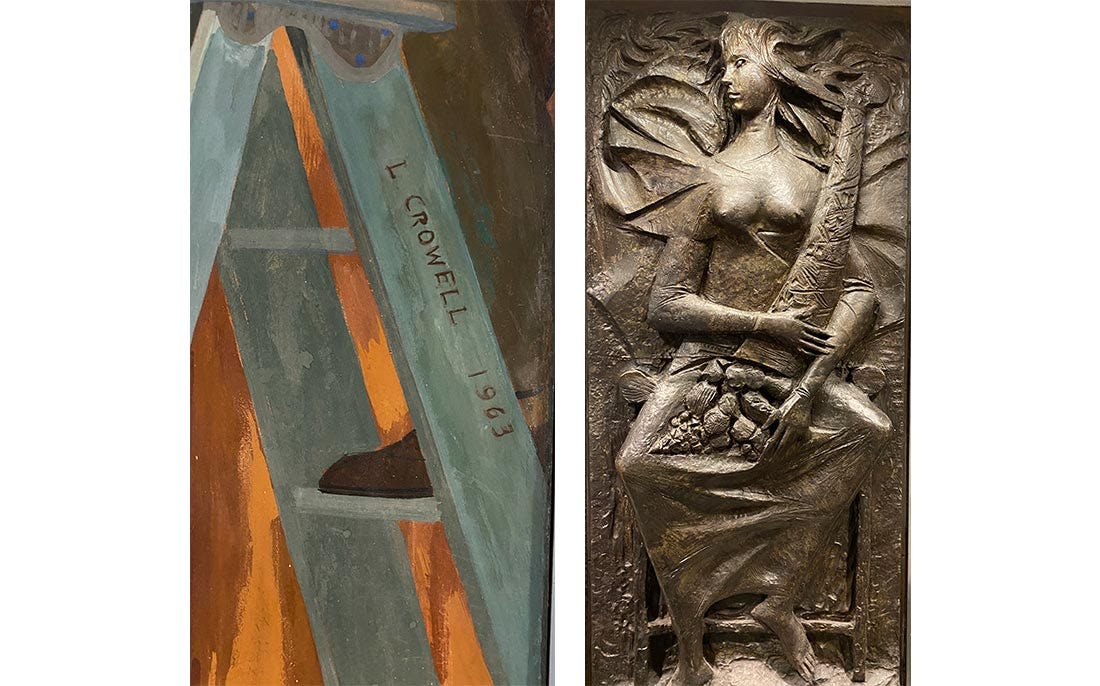Welcome to issue #8 of Susanality, a free weekly newsletter. If you’re loving it, please consider becoming a paying supporter. New paid features are coming soon!
In my most recent book, Open Kitchen, I included a recipe for Farro Pilaf. As I explained in the headnote, it was inspired by my grandmother Essie. We often visited her in her apartment house in Philadelphia for Sunday dinners, where her rump roast was usually accompanied by a savory side dish of barley pilaf with mushrooms. As soon as the elevator doors opened to her floor you could smell the comforting aromas of this simple dinner wafting through the hallway. I absolutely loved this dish and have often recreated it over the years. It’s simple to make. The main secret I got from my grandmother was to toast the grains for a long time before adding the liquid. This adds a lot of deep, nutty flavor to the already nutty grains.
I like the version made with farro that I printed in my book, but recently I was inspired to make it the original way, using pearled black barley I bought a few months ago from the Grow NYC booth in the Union Square Greenmarket. It was the dead of winter, and there wasn’t much fresh to buy, so I had my eyes peeled for interesting things to cook. Making it reminded me how much I liked the barley version. This particular barley, sourced from Maine Grains is especially good. The grains are smaller than normal pearled barley, and traces of the black hull are still there.
Barley has the ability to get very creamy, like risotto, because of the high starch content. You can even cook it risotto-style, stirring frequently, and adding the hot liquid a little at a time for a more porridge-like texture. What I like about barley is the way the grains feel kind of springy and bouncy between your teeth, giving the pilaf the most delightful texture. Perhaps it is one of the special properties of the Black Nile barley from Maine Grains—I will have to do a side-by-side comparison with ordinary pearled barley and get back to you. (Farro, which cooks more quickly, was not known or available in the U.S. in Essie’s day.)
In keeping with the nostalgia I’ve been feeling, I decided to drop into my grandmother’s building, the Hopkinson House, on a recent trip to Philly. I had not stepped foot in the building for many years. I wondered whether the mural in the lobby that I loved to gaze at as a young child was still there, and whether it was actually as good a painting as I remembered.
We were reserved to eat at a restaurant just steps away, not a coincidence. We left our hotel a few minutes early so we would have time to check it out. I explained the situation to the doorman, who graciously let us in. There was the mural, in all its glory, its colors still bright, and its scene still captivating. The lobby was a bit smaller than I remembered, but that’s true of all the places of our childhoods, isn’t it?
Steve suggested that murals like this are usually signed, and sure enough we found a signature underneath a self-portrait of the artist on a ladder. He was Lucius Crowell, and the name of the painting is “Philadelphia Panorama”. Crowell was active in the Philadelphia art scene in the early 60’s, when this Bauhaus-style building was built. The architect, Oskar Gregory Stonorov, had studied with both Le Corbusier and Frank Lloyd Wright, and was also a sculptor, so it made sense that he commissioned art for the building. What I did not remember were the four wonderful bronze relief sculptures that flanked the elevator doors, representing the four seasons. These were also signed, by Jorio Vivarelli, an Italian sculptor who contributed to other art projects in Philadelphia. As soon as I saw them the memories came flooding back. I remember running my hand over the cool metal surfaces as we waited for the elevator that would take us upstairs to my grandmother’s apartment filled with those good smells and her barley pilaf.
There is absolutely nothing fancy about this dish, but it is satisfying and flavorful, and can be enjoyed in many ways. Put it on the side of a nice roast chicken or roast beef, as Essie would have served it. It can be the base of a warm grain bowl, or the bed for a perfectly poached egg, maybe with some roasted asparagus. Or, as I have recently enjoyed it, cold from the fridge.
If you haven’t yet, or want to explore subscription upgrades, please click the little button below. Fun things are on the way!
PS - I wanted to remind you that all of the recipes in my newsletters live permanently here. You can also scroll through public recipes on my site or keep up with me on Instagram. Or better yet, you can support me by ordering my book, Open Kitchen.
Toasted Farro (or Barley) Pilaf with Mushrooms
click here for a printable version
Serves 6
I’m sad to say I don’t come from a long line of great cooks, but I did look forward to my grandmother Essie’s Sunday dinners. She lived in a high-rise apartment building in Philadelphia, where I grew up, so when we got out of the elevator on her floor, I could smell the dinner she was cooking, which usually was rump roast and barley pilaf, which I loved. This dish is an homage to her and that barley pilaf. I’m using farro, adding a lot more mushrooms, and fresh dill, which Essie didn’t use, but it makes sense with the Eastern European accent of this dish. This is comfort food for me.
3 tablespoons olive oil
1 tablespoon unsalted butter
1 cup farro or pearled barley
4 small shallots, trimmed and sliced lengthwise
8 ounces mushrooms (any kind!), sliced
Salt and freshly ground black pepper
1 3⁄4 cups homemade or low-sodium boxed chicken stock
1 tablespoon balsamic vinegar
1⁄2 cup chopped walnuts
1⁄2 cup fresh dill leaves
Heat 1 tablespoon of the oil in a large, wide saucepan over medium heat. Add the butter and farro or barley and toss to coat. Toast, stirring occasionally, until deep golden brown, 8 to 10 minutes. If the farro starts getting too dark, reduce the heat to medium-low. Transfer to a bowl.
Add another 1 tablespoon of the oil to the pan, increase the heat to medium, and add the shallots. Cook for 5 minutes, or until golden. Add half of the mushrooms, increase the heat to medium-high, and cook until browned, 4 to 6 minutes. Add 1 teaspoon salt and pepper to taste. Return the farro or barley to the pan and add the stock and vinegar. Scrape up any browned bits from the bottom of the pan and bring to a boil. Reduce the heat to maintain a simmer, cover, and cook for 35 minutes, or until all the liquid is absorbed. Set aside.
In a small nonstick skillet, heat the remaining 1 tablespoon oil over high heat. Add the remaining mushrooms and cook, tossing frequently, for about 5 minutes, until browned and crispy. Add the walnuts, 1⁄8 teaspoon salt, and pepper to taste and cook, tossing, for 3 minutes more.
Stir half of the dill into the pilaf and transfer a serving bowl. Top with the mushroom mixture and the remaining dill and serve.








Lovely to read your memories of those wonderful visits. In 1978, I had a relatively long work assignment in Philadelphia ...I lived on 15th and Spruce and walked to 4th and Walnut every day. Wish I had noticed your grandmother's building but there was no shortage of places to explore or to eat. I was just reminiscing about that time with a visiting CA friend who used lived in Philly for many years.
Looking forward to trying this dish.
Benita
Brookkyn NY
Lovely backstory! Some of my favorite childhood memories are about the different special dishes each of my grandmothers made. They both excelled with potatoes although each had her own special preparations. They lived through the Depression and felt you needed meat on your bones to prove you were healthy.